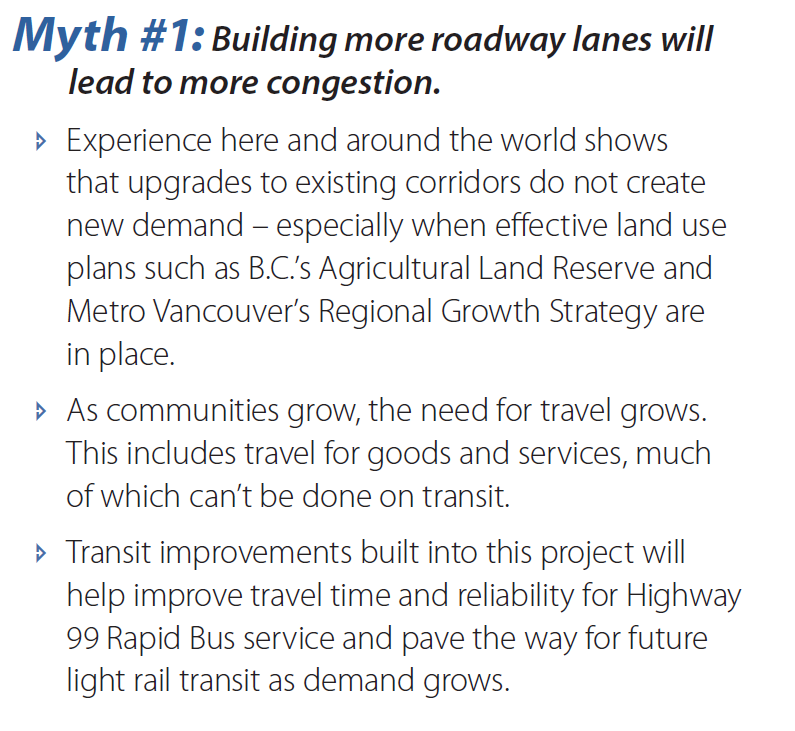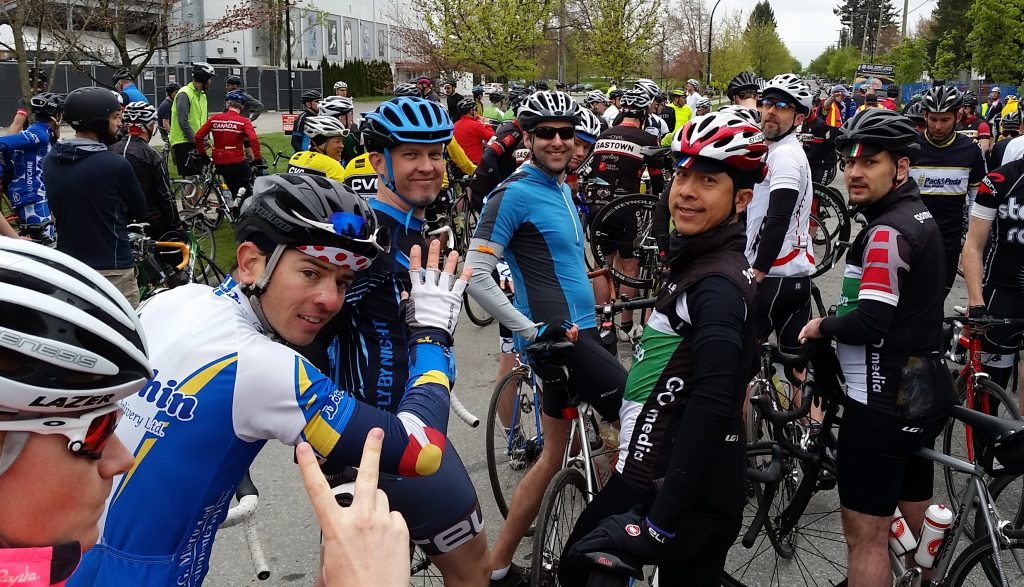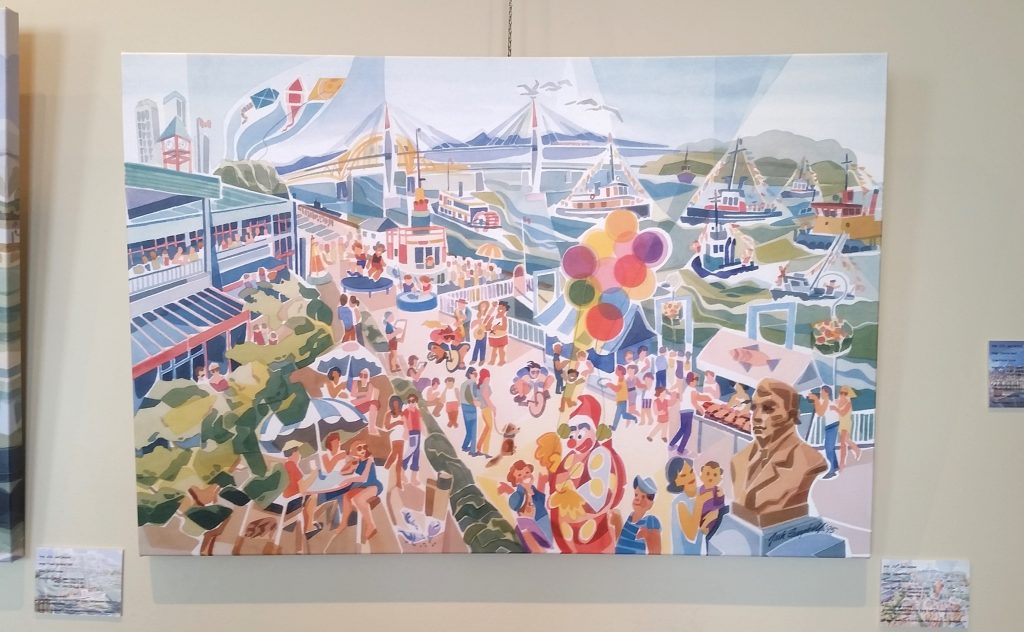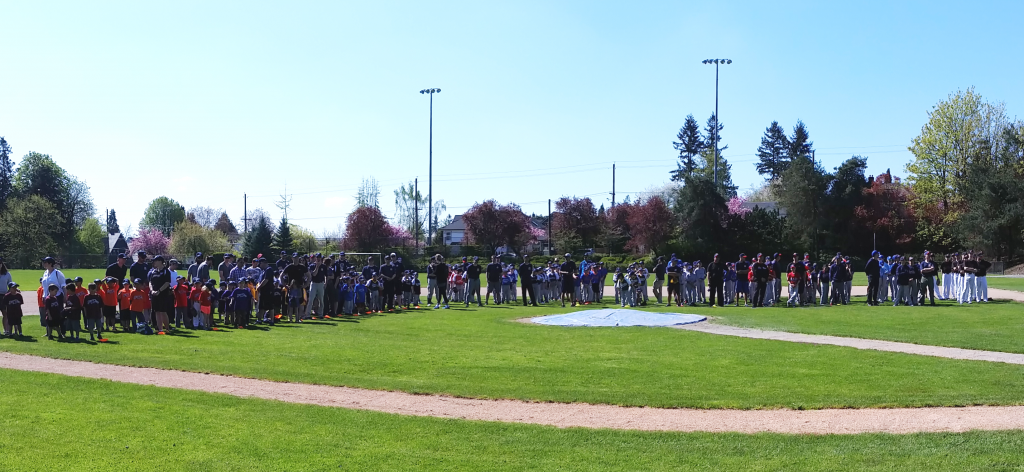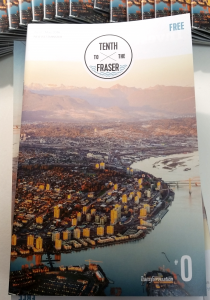As is standard for our last meeting of the month, we started our April 25 meeting with a Public Hearing.
This was to discuss amending the zoning language for 805 Boyd Street (the Westminster Landing retail area) and granting a Development Permit to allow the construction of one of those drive-through oil change places. This would be located on a relatively unused part of the parking area, adjacent to the Nando’s.
We had one person speak in opposition to this Zoning Amendment. They were a nearby property owner who leased to businesses of a similar type. He raised concerns about the timing and level of notice given to the surrounding areas. Staff confirmed that a complete mailout had been done to businesses and property owners, and that the signage and notice had met all of the requirements of the Bylaw and were appropriate for the development.
Council moved to receive the comments and referred the subject of the Public Hearing to Council.
That launched our Regular Meeting:
Zoning Amendment (805 Boyd Street) Bylaw No. 7827, 2016
Development Permit DPQ00096 for 805 Boyd Street
Council moved the Zoning Amendment and Development Permit. The change will allow “small box” automotive repair in Westminster Landing, and will allow the construction of the drive-through oil stop place. I was not given any compelling reason to vote against this proposal, and will continue to support my local independent mechanic (200,000+km on my 1996 Civic, still runs like a top!).
We then had a formal Opportunity to be Heard:
Development Variance Permit 00605 for 322 Sixth Avenue
After the required notification had been completed, the City received no correspondence on this project, and no-one came to speak in opposition to it. This is a slightly unusual corner lot in Queens Park, the heritage home is set a long way back from the street on two sides, and the owner wishes to build a relatively modest garage on the laneway. There simply isn’t enough room to build a garage with the required 5’ setback, so the owner asked for a variance to move the garage closer to the lane. This would align this new garage with the legally non-conforming garage right next door.
I have no reason to oppose this variance, and Council voted to approve it.
Queen’s Park Neighbourhood Heritage Conservation:
This might be the big story of the night. Following a couple of high-profile demolitions of heritage homes in Queens Park a couple of years ago, a large group of community members got organized and asked for the City to help them develop strategies to prevent the loss of more heritage homes in Queens Park.
This resident-driven process has been very proactive, and has developed a list of recommendations for the City, including developing a Heritage Conservation Area. There are many details to work out, but the short version would be the designation of all residential areas of Queens Park (essentially the residential areas between 6th and 1st streets and 6th and Royal Aves) as an area-wide heritage protected area. Within this are, homeowners would need to apply for special permission to do any demolition or significant alteration of their houses. Presumably, a heritage Conservation Commission would provide advice to Council on how to protect the heritage values of the property through the process, which may simply be impossible if someone wants to knock down a 100-year-old house. This would effectively permit Council to refuse to issue a demolition permit if it threatened the heritage value of the neighborhood.
There are other recommendations put forward to help preserve heritage homes, including incentives to make renovation and conservation easier, and the launch of a major effort to identify, characterize, and catalogue the heritage assets of the neighborhood. However, it is the proposal to designate the area and put processes in place to legally prevent demolition that will, no doubt, generate the most conversation.
Council moved to receive the report, and Staff will be working to evaluate the recommendations: some, such as “California Mills Act” type property tax changes may not be legal under the Community Charter, and others will need to find a funding source. In the meantime, the conversation in the neighbourhood, and indeed across the City, about how private property rights bump up against heritage conservation is sure to be an exciting one.
Bus Passes Reinstatement
The provincial government recently stripped funding from a special transit pass program for disabled seniors and people on disability assistance. I often get outraged about decisions made by senior governments, but I don’t usually bring that rage to the Council table. When Councillor McEvoy raised this issue, and suggested Council raise its voice, I heartily agreed, because it impacts our community so acutely.
New Westminster is a transit-oriented city, and we are doing so much work to make the transit in our City more accessible. This isn’t just something we are talking about, we are investing money in this – We are on track to have 100% accessibility for our bus stops ahead of any City in the region, we are accelerating our curb-cut program and working to improve accessibility for those with dementia, with vision impairments, and with mobility barriers. We aren’t doing this to fluff our own feathers, we are doing it because an accessible transit system is fundamental to the livability or our City, and the right thing to do
So I find it unacceptable that this government has decided without consultation to take that accessibility away from the most vulnerable members of our community, those who need it the most. It is mean, it is punitive, capricious, and wrong.
228 Nelson’s Crescent (Second Residential Tower, Brewery District):
Master Development Permit Amendment and Consideration of Development Permit Issuance
The deal that was originally signed with WesGroup set several conditions on the approval of the residential building, to assure the development met the City’s goal of “mixed use” and brought amenities to the community prior to an influx of new residents. WesGroup build and leased out most of the required office space and the major shopping amenities of the Brewery District prior to starting the first residential tower, but now want to proceed with further residential development prior to completing the entirety of their office space commitments. Their argument is that the office demand simply isn’t there right now, but will be once the RCH development is further along, but the demand for residential space is feeling no relaxation. The City will not let WesGroup off of the commitments they have made, but are at this time OK with making some changes in the timing, recognizing that WesGroup has already made good on the majority of the work.
There are still a few concerns long-term with the Brewery District development, mostly around traffic management. I have emphasized many times that the entire development cannot rely on East Columbia Street for all ingress and egress for cars, and that work needs to be done between the City, RCH and WesGroup to re-imagine how the foot of Keary (below East Columbia) is going to operate if WesGroup and RCH both have underground garage entrances there. I would be happy to see those garages not connect at all to East Columbia, but to have Keary dead-end mid-block between East Columbia and Brunette, with a signal-controlled intersection at Brunette and Keary. There are also concerns regarding how Nelson’s Crescent and Nelson;s cOurt interact with East Columbia, which will likely need ot wait until the Sapperton Traffic study is completed.
Qayqayt Elementary School – Transportation Update
There are ongoing concerns in the community about safe routes to Qayqayt School. This is something that has been going on since the school opened. I have toured the site several times, it has been discussed at NTAC and ACTBiPed meetings, and as part of the Master Transportation Plan implementation work. Compared to where we were two years ago, a lot of progress has been made. Notably, there have been many improvements on Agnes and with vital downtown intersections along 4th Street. The “slipway” off of Royal onto Merryvale has been re-designed, with some pavement, signage, and geometry changes.
However, proximity to Royal Ave still causes concern. The homes north of Royal adjacent to Qayqayt are actually in the Herbert Spencer catchmnent, but some students do still make this crossing. There was an incident a couple of weeks ago where the crossing was green, a crossing guard was present, but won child advanced ahead of the guard. Unfortunately, at the same time, a car failed to stop behind the white line, and rolled a few feet into the crossing, striking the child, who was knocked off of his/her bike. Fortunately, the child was not seriously injured, but this incident raised awareness of the potential for danger at that intersection.
Our engineering group is working with the School District and PAC to evaluate ways the intersection can be improved to emphasize pedestrian safety. The initial assessment indicated there were no engineering failures – the intersection is designed with adequate sight lines, controls, and geometry that it is ostensibly as safe as the design code requires. However, nothing in the code prevents us from exceeding those safety requirements, and in light of the type of traffic we get on Royal, and the vulnerability of the pedestrians using the crossing, our engineers will be looking at creative methods to increase the safety.
The following Item was removed from the Consent Agenda:
Westminster Pier Park 2015 Food Services Overview
We were provided a report on the food service operation at Pier Park. It has been a bit of a struggle to get an operation up and running, but now that we have better access to the Park via 4th Street and some potential for increased programming in the Park, the trend is going the right direction.
Councillor Trentadue raised an interesting question about whether it is possible to license this operation so people could get a beer or a glass of wine while enjoying the Park. I agree this is an area for further exploration, as is opening up the Park to Food Trucks and other temporary vendors. The model we have now is very similar to the Treats concession stand in Queens Park, which has been run on what is essentially a cost-recovery basis for years. It is possible we can get to that place with the Pier Park concession as the Park gets more established. It is also possible that we can look at alternative delivery models for the site… more to come!
The following items were moved on Consent:
2016 Downtown BIA Parcel Tax Bylaw
2016 Uptown New Westminster BIA Parcel Tax Bylaw
These are our annual bylaw updates to support the Parcel Tax that funds the Downtown Business Improvement Areas. This Bylaw formalizes the agreed-upon tax rate: the amount of levy charged per linear foot of business frontage, which is ~$20 in the primary part of Downtown, ~$15 in the secondary part of Downtown, and ~$20 in Uptown. This money is collected by the City, but it returned back to the BIA organization for them to use in promoting and developing their commercial neighbourhoods.
2016 Tax Rates Bylaw
This Bylaw formally adopts the Property Tax increase required to support he now-adopted 2016-2020 5-Year Financial Plan. That increase is 2.73%. I’ve got one good blog post left in me about this increase, answering the common question: Why is it always more than inflation? Coming soon!
We then moved on to our ever-popular Bylaws:
Downtown New Westminster BIA (Primary Area) Parcel Tax Bylaw No. 7828, 2016
Downtown New Westminster BIA (Secondary Area) Parcel Tax Bylaw No. 7829, 2016
Uptown New Westminster Business Improvement Area Parcel Tax Bylaw No. 7830, 2016
As mentioned above these Bylaws were each given three readings.
Tax Rates Bylaw No. 7831, 2016
As mentioned above this Bylaw was also given three readings.
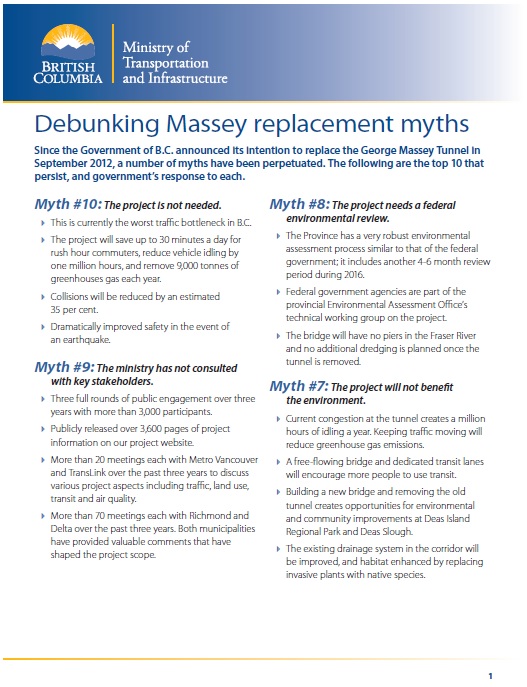
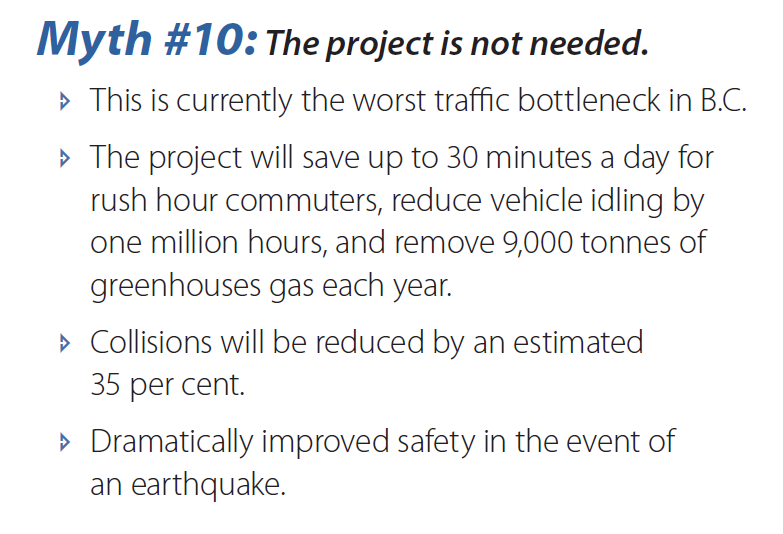
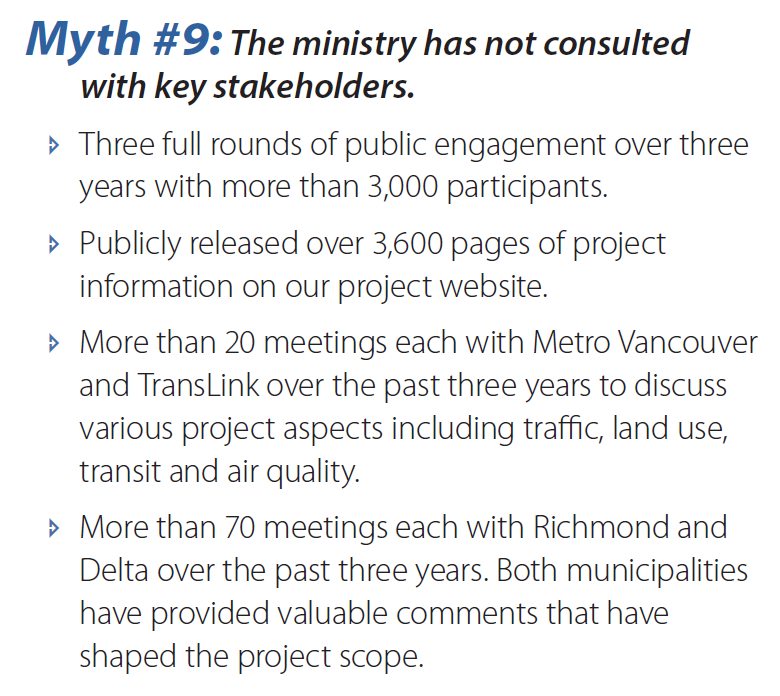 There is no doubt the Ministry has talked to many people, but to say they have “consulted” is quite the stretch. The City where the majority of the project has taken place
There is no doubt the Ministry has talked to many people, but to say they have “consulted” is quite the stretch. The City where the majority of the project has taken place 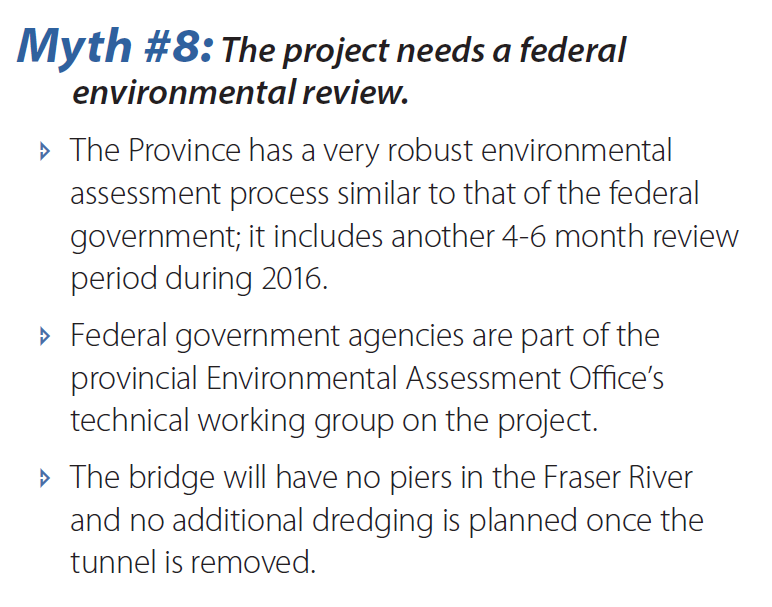
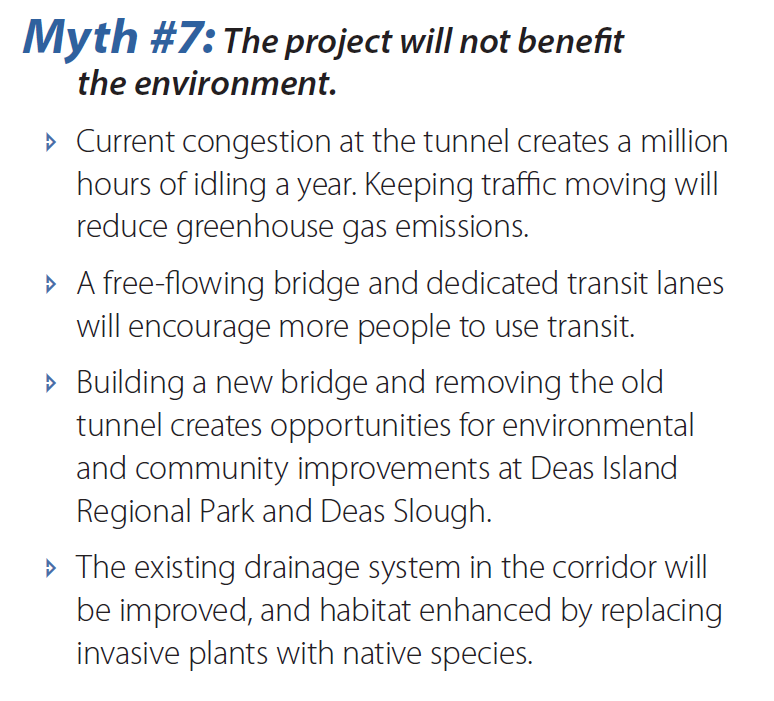
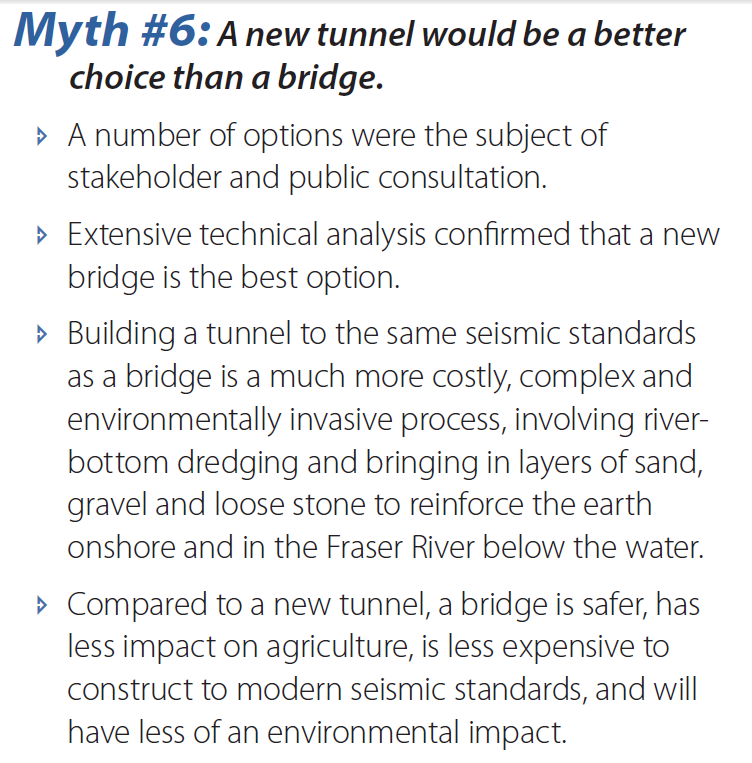 This may very well be true. But you know what is cheaper than building a new tunnel and cheaper than a new bridge? Making the infrastructure you already have work better. One of the more galling parts of this entire project is that no-one seems to be looking at the opportunity cost of a $3.5Billion infrastructure investment – what real improvements could we build to the regional transportation system with that kind of money.
This may very well be true. But you know what is cheaper than building a new tunnel and cheaper than a new bridge? Making the infrastructure you already have work better. One of the more galling parts of this entire project is that no-one seems to be looking at the opportunity cost of a $3.5Billion infrastructure investment – what real improvements could we build to the regional transportation system with that kind of money. 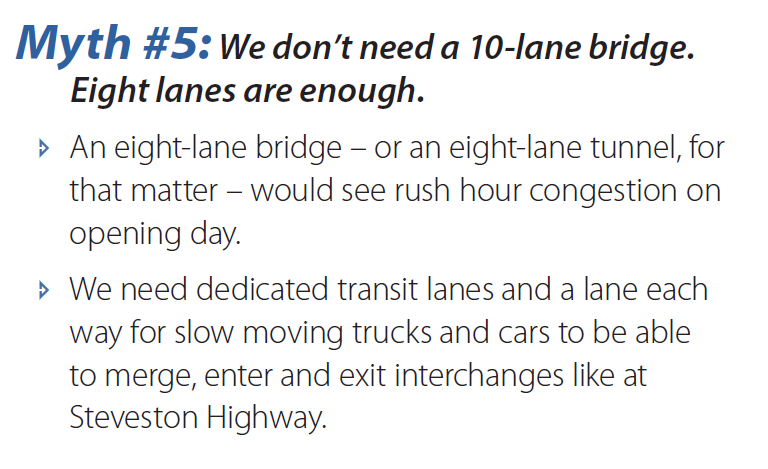
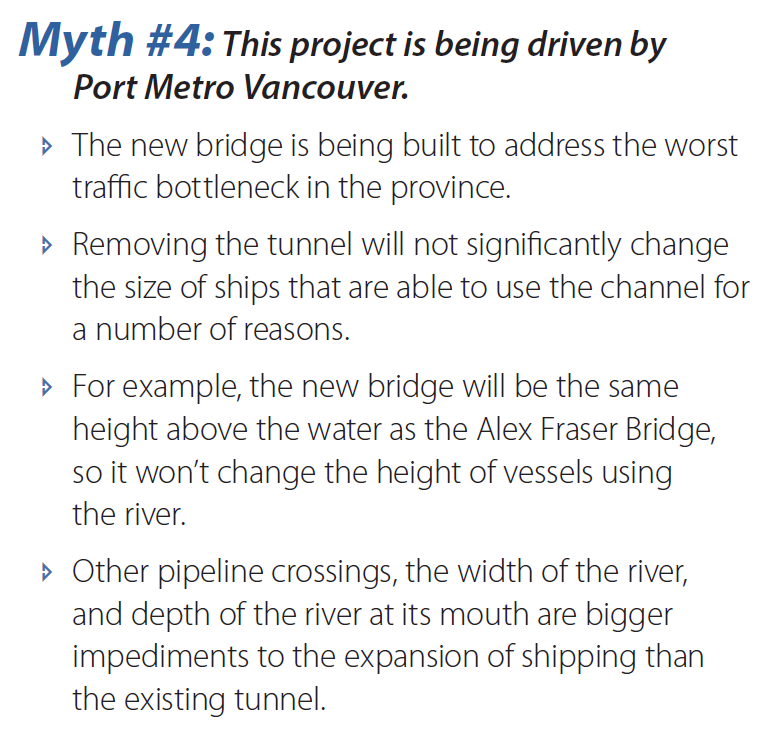
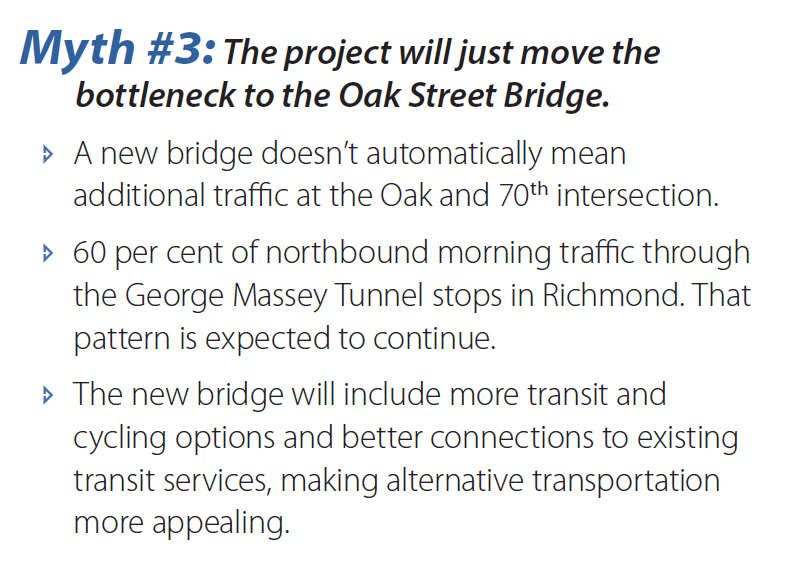
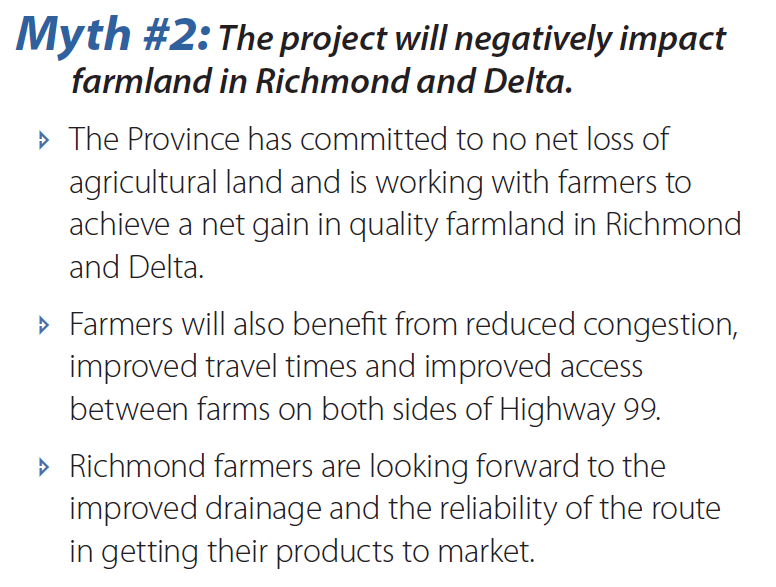 Did you know that Highways are allowed in the ALR? Much of the South Fraser Perimeter Road is actually in the ALR, no exclusion necessary, just compensation paid to the property owner who has his acreage bisected or cut off. So the Ministry can put the entirety of this project on ALR land and claim “no net loss” of ALR land- although admittedly it is hard to farm asphalt.
Did you know that Highways are allowed in the ALR? Much of the South Fraser Perimeter Road is actually in the ALR, no exclusion necessary, just compensation paid to the property owner who has his acreage bisected or cut off. So the Ministry can put the entirety of this project on ALR land and claim “no net loss” of ALR land- although admittedly it is hard to farm asphalt.